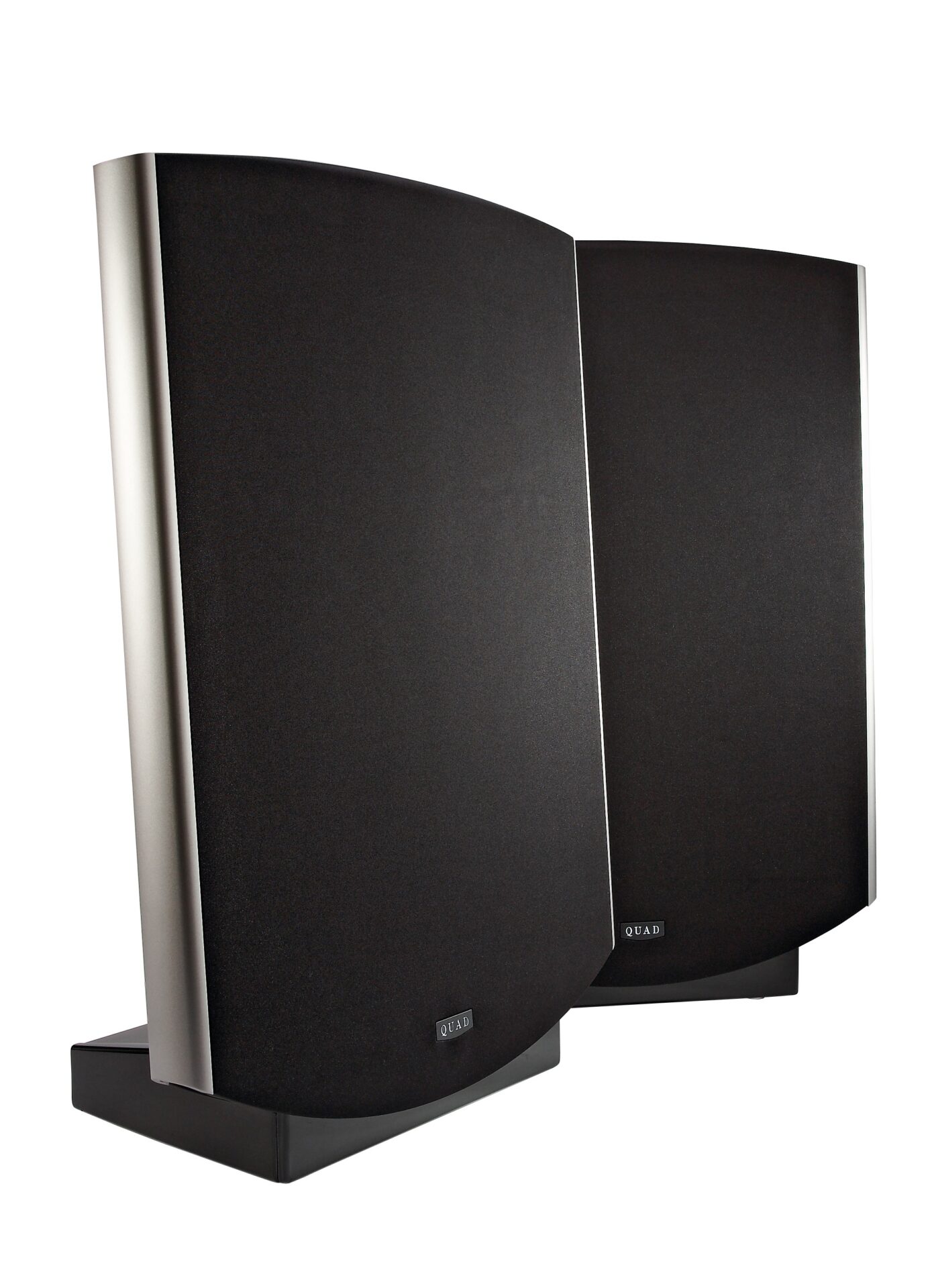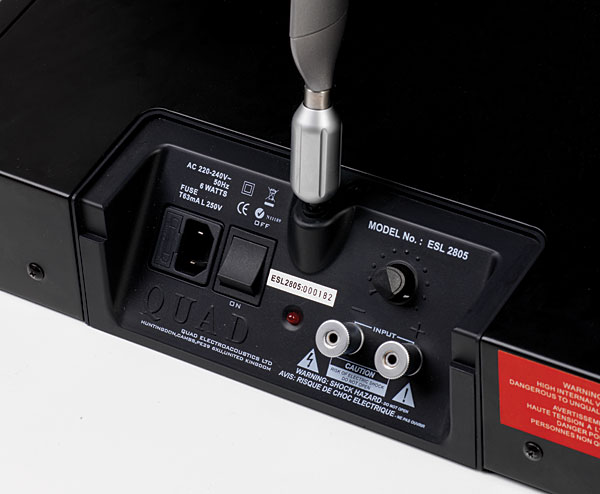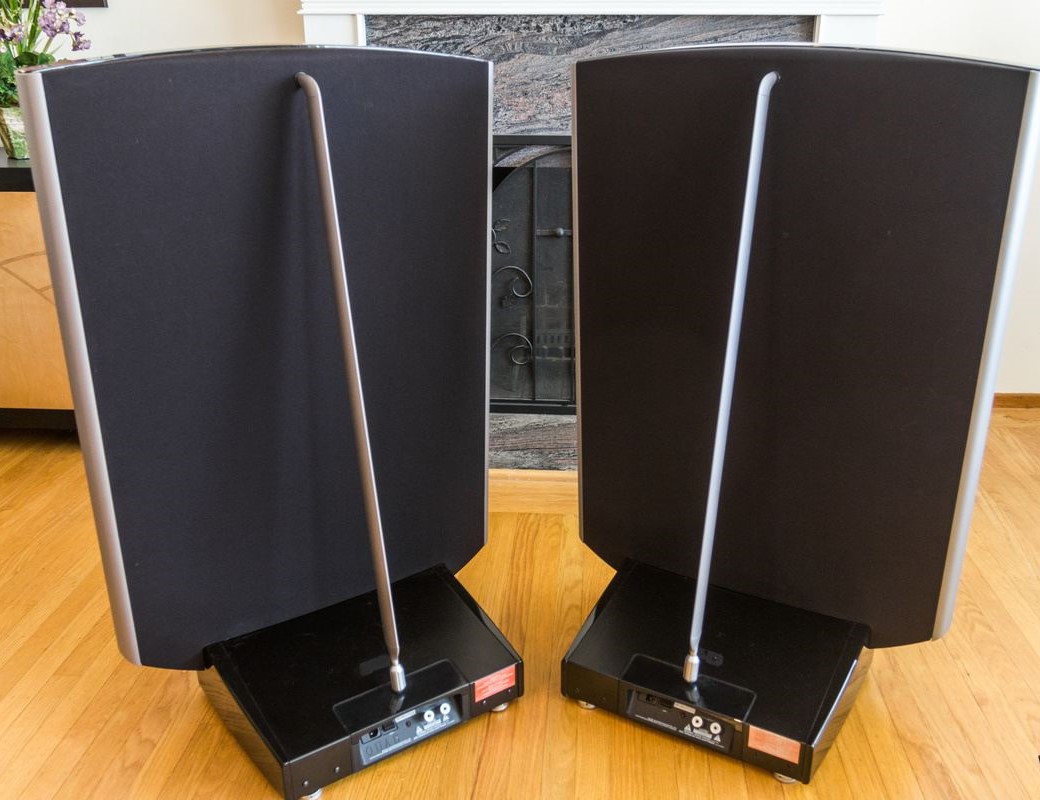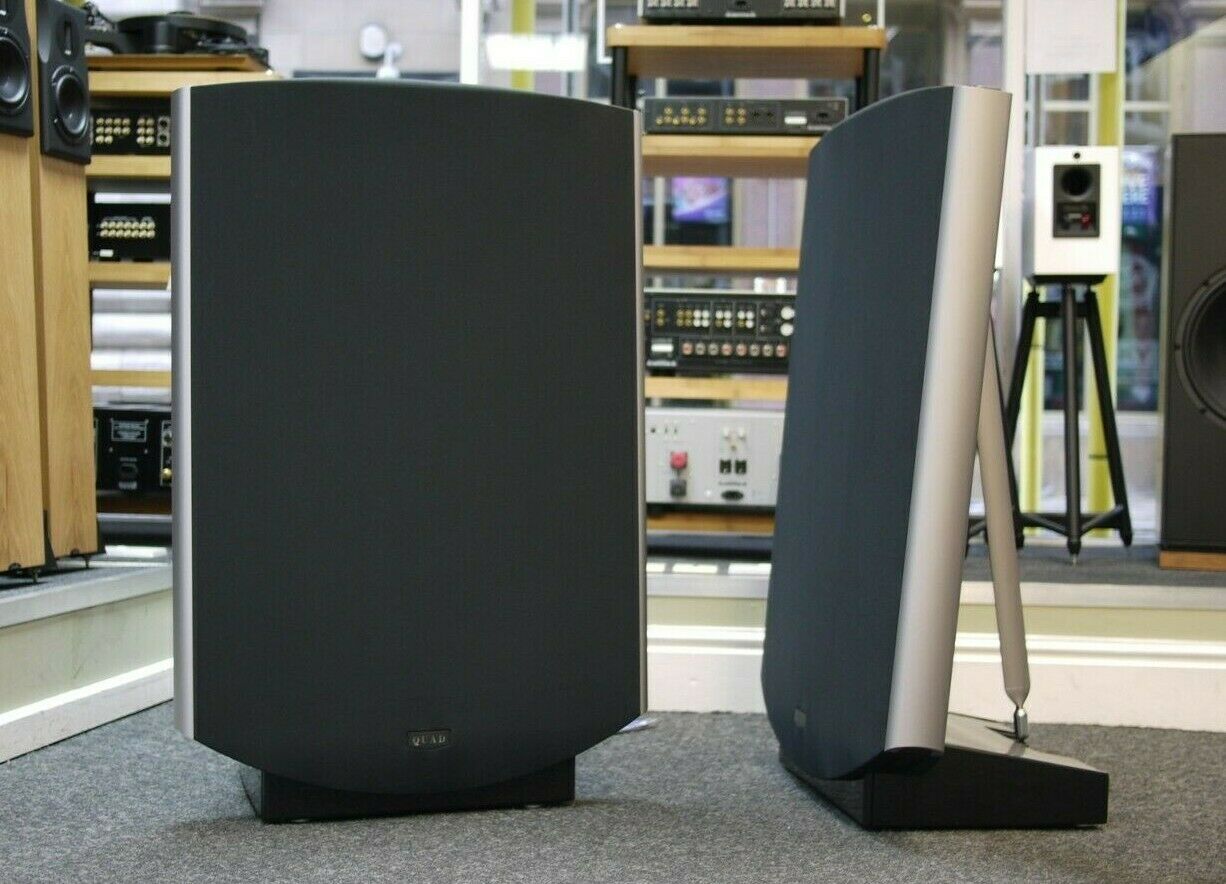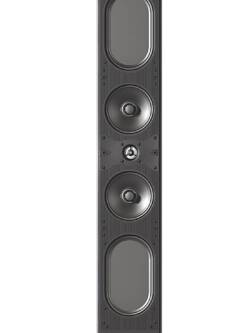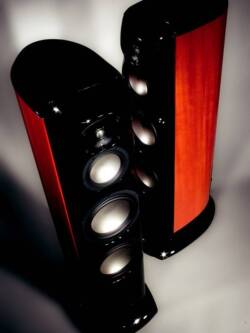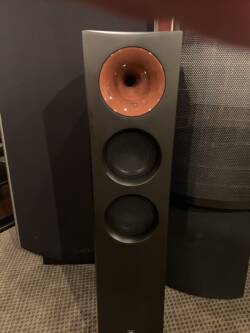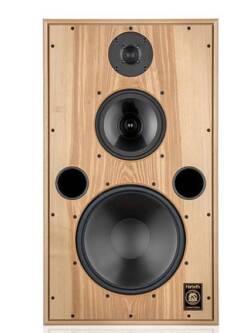Quad 2805 Speakers
Original price was: R88,000.00.R15,000.00Current price is: R15,000.00.
OUR VERDICT
In many ways these Quads are exceptional, but they’re not all-round talents
FOR
- Astonishing cohesion
- midrange naturalness
- detail resolution
AGAINST
- Fussy about positioning
- lack the dynamic punch of some rivals
- slightly lumpy bass
There are few hi-fi products that justify the use of the word ‘legendary’; the Quad electrostatic is one that does.
It’s been five decades since the company’s first generation of electrostatics set sky-high standards for detail and naturalness, and many believe that, even now, the originals still haven’t been surpassed in these respects.
On test are the ESL 2805s, the fourth generation of Quad’s electrostatics. In many ways these speakers stand out from the competition as much as their ancestors did all those years ago. Midrange: that’s what these electrostatics are about.
Properly set up (more on that later) the ESL 2805s are absolutely glorious in the middle region, making all but the very best conventional box speakers sound broken in comparison.
The magic and passion of great vocalists such as Nina Simone or Jill Scott shines through. Every word and vocal inflection is delivered with utmost clarity and convincing naturalness.
Despite the multiple electrostatic panels, these are one-way speakers. That means no crossover in the signal paths, so none of the sonic degradation such a circuit invariably imparts.
There’s no enclosure, either: the ESLs fire as much sound backwards as they do forwards. This gets rid of all the colourations and distortions such boxes normally add.
A very particular pairing
So far, so good, but the unusual design of the Quads means you’ll need to take special care in getting the positioning spot on. These are the fussiest speakers we’ve had in our listening room for years.
With sound firing backwards and forwards, the distance from the back wall becomes vital. Consider 1.5m a bare minimum, and you may well have to put damping material such as curtains or bookshelves (filled with books, of course) behind to absorb as much as possible.
If you don’t get this right you’ll lose some of the focus and transparency that makes these speakers so special.
The position of the sidewall isn’t so critical, and you can get quite close because the speakers fire little sound in that direction. However, toe-in angle is important to ensure stereo imaging is as precise as possible.
Get it right and you’ll have a sound stage that is as layered, well-focused and precise as the best money can buy. You can add decent timing and exceptional low-level dynamics to the list of plus points, too.
Perhaps too analytical?
Provided you can get the positioning right and match it with a system that shares the strengths of the ESL 2805s, you won’t be disappointed. However, these speakers aren’t perfect.
Similar money buys conventional box speakers that deliver greater dynamic punch and considerably deeper, more powerful bass. The Quads’ analytical approach to music making won’t appeal to all, either.
Finally, the bass performance may be integrated beautifully, but it’s a shade heavy-handed and lumpy: this is not a trait shared with these electrostatics’ big brother, the ESL 2905s.
Nevertheless, the ESL 2805s are brilliant in parts, and for the right kind of person may well be the best speaker they could ever buy. If you’re in the market at this price, give them a listen.
This is a major reason why most speaker systems have two or more drive units, the addition of a tweeter providing wide directivity at high frequencies. The Quad design is different: it may sport two outer panels flanking a pair of smaller central panels, but these elements are fed the same frequencies and there are no ‘treble’ and ‘bass’ units… and no need for a crossover.
All Quad electrostatics (from the ESL-63 onwards) have eight concentric rings in the two centre stators, connected via delay lines that progressively delay the feed to the larger, outer rings. This allows a flat diaphragm to mimic a point source one-third of a metre behind the speaker itself, with the highest frequencies generated from the innermost circle outward. In other words, the speaker attempts to recreate a notionally ‘perfect’ transducer.
Because the electrostatic 2805 operates on an entirely different principle from regular dynamic speaker systems, all the rules are changed, and a totally different set of compromises emerges. In some respects, the 2805 sets a performance benchmark that even the most costly regular speakers can only dream of approaching; in other respects it has obvious and exasperatingly recalcitrant limitations.
Providing your choice of music and listening levels suit its strengths – and for many that will be the case – the 2805 is one of serious hi-fi’s greatest bargains. It’s unquestionably best at reproducing acoustic instruments (including voices), but has its limitations in both loudness capability (partly due to very low sensitivity) and deep bass reproduction (as a consequence of dipole operation).
Because there’s no box, there’s no boxiness. And because the actual weight of the Mylar film diaphragm is less than one hundredth the weight of even a light driver cone, and is effectively evenly driven across its entire surface, it is exceptionally responsive to even the tiniest signals. Furthermore, because the diaphragm is large, and therefore makes only tiny movements, linearity is high and distortion very low.
Changing over from a conventional speaker to the 2805 can be a little disorienting, because the differences in presentation are dramatic. This speaker has the most stunningly gorgeous midband you’re ever likely to hear, combining remarkable neutrality with great expression and delicacy. There’s also an inherent sweetness here that results from a splendid freedom from any exaggeration or hype.
The ‘Quad’ sound has wonderful coherence and unusual phase-accuracy, bringing remarkable realism to human voices, and creating exceptionally precise stereo images. Piano and woodwind reproduction also stands out as startlingly realistic, though brass can get a little edgy. However, these observations could well relate as much to the sources, amplification and ancillaries being used as the speakers themselves, as the 2805s proved exceptionally sensitive to components further up the chain.
Contributing to the pin-point imaging is the fact that dipole speakers have a much higher direct-to-reflected sound ratio than monopole box loudspeakers. In other words, you hear more of the actual recording, and less of your listening room. The pinpoint imaging is most impressive, but there’s still some beaming of the very highest frequencies here, so best results are obtained when the listener is seated directly on the forward axes – and there’s really only one ‘best seat in the house’.
While much of this speaker’s sound is deeply impressive, there are some limitations. The bass extension is defined by the width of the speaker here, and limited to around 50Hz, so the bottom octave is not on the agenda. It might be possible to supply the extra bass octave with some form of subwoofery, but this is far from straightforward, as the Quads are velocity transducers, whereas most subwoofers are pressure devices.
Attempts to use two of REL’s new T-series subwoofers did not prove successful. Despite the limited extension, the bass reproduction of the Quads alone is qualitatively good – crisp and clean, with no overhang, though it could be more even, and one wonders whether some means of lifting the whole speaker 10-20cm or so off the ground, leaving free air underneath, might be advantageous.
The 2805 has both low sensitivity (around 84dB) and relatively modest power handling (though sophisticated electronic protection ensures that accidental overload won’t cause any damage). This is not therefore the ideal speaker for those who like their rock music loud and dirty, but in contrast its low level performance is utterly entrancing.
One day the BBC in its wisdom chose to broadcast Verdi’s exceptionally dynamic Requiem after 2am, when serious levels are totally impractical. But the 2805 performs masterfully even at whisper quiet levels, and the rich texture and detail came through beautifully.
Within acknowledged loudness and bass limitations, this genuine ‘high-end’ reproducer sets the standard for natural realism of voices and acoustic instruments. Not a great rocker, but imaging, coherence and low-level detailing are exceptional.
I included the dual-mono pink-noise track on Editor’s Choice because it provides an unambiguous means of testing a pair of speakers’ ability to image. With amplitude-stereo recordings—99.99% of all stereo recordings ever made—the pink noise should sound like an infinitely narrow slice of sound placed precisely midway between the speakers. This almost never happens. Room reflections, speaker-cabinet resonances, and speaker coloration and balance problems broaden the image at some if not all frequencies—and with some pathological examples, at some frequencies you don’t get a narrowly defined image at all. But once I had the ESL-2805s optimally set up, that central slice of sound was superbly narrow and solidly stable across the audioband. This means that every element in a conventional stereo recording will be correctly positioned in the space between the speakers—including the recorded reverberation, which, if reproduced at the correct place in space, will create a believable illusion of image depth.
And if the recording has captured the appropriate interchannel phase information, a pair of good speakers will also throw an image outside the space defined by the speaker positions. This the Quads managed with fetishistic ease: the arboreal effects that begin the first cut on Andreas Vollenweider’s “Behind the Gardens–Behind the Wall–Under the Tree,” from the CD of that title (ALAC file, ripped from the original 1985 Swiss CD), were positioned way outside the speaker edges.
The Quads’ soundstage depth was equally impressive. In his cover of Randy Newman’s “I Think It’s Going to Rain Today” (ALAC file, ripped from Scratch My Back, CD, Real World 1), Peter Gabriel sings with a very close, almost conversational sound. The contrast between the image of his voice and the clearly defined tinge of ambience around the accompanying piano was maximally delicious through the ESL-2805s, pushing the instrument back in the stage.
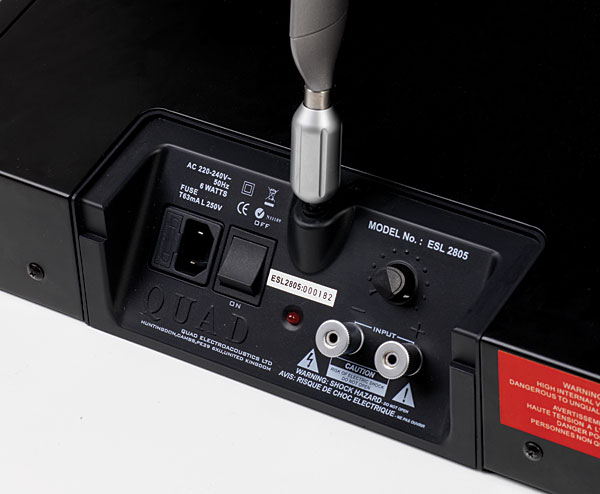
It was the same with my recording of Bob Reina’s jazz quartet Attention Screen, which I recorded live in Manhattan in 2010 for Takes Flight at Yamaha (24/88.2 master AIFF for the CD release, Stereophile STPH021-2), particularly the spacious-sounding space jam “Ear Topology.” Through the ESL-2805s, the different characters of the delay pedals used by Don Fiorino on his Fender Stratocaster and Chris Jones on his fretless Jazz Bass contrasted with the wash of luminous ambience I had added with Metric Halo’s Haloverb engine to tie the mix together. And when Mark Flynn works his way around his drum kit, the time-slicing Quads unambiguously preserved the spatial qualities of which drum and cymbal was positioned where without detracting from the overall picture. The track ends with Chris hitting a decaying, repeated-echoed treble lick on his bass. When I mixed this track, as Chris flicked the lick, I panned the bass from the center of the stage to audience right while leaning on the Reverb Return fader. What I wanted was the impression that the bass was taking flight and soaring back to the upper right of the stage. And that’s exactly how the Quads presented it, more clearly defined than when I’d mixed it.
I haven’t commented on the Quad’s having a signature to its sound. That’s because it had no midrange coloration. Yes, the top octaves sounded slightly sweet, and perhaps there was a touch of edge in the mid-treble, but I couldn’t get a consistent handle on the latter aspect of the speaker’s sound. Almost all the time, and especially when driven by the class-A Lamm M1.2 monoblocks, everything just sounded right. For example, our “Recording of the Month” for February 2003, Beethoven’s Complete Violin Sonatas performed by Augustin Dumay, accompanied by pianist Maria João Pires (ALAC files ripped from CD, Deutsche Grammophon 471 495-2), has been in heavy rotation the past few years, especially Sonata 10 in G, Op.96 No.1, a work I had grown familiar with from the superb 1987 Wilson release with David Abel and Julie Steinberg (LP, Wilson Audiophile W-8722). But the Dumay performance is the one that speaks to my soul, perhaps because of Pires’s sympathetic accompaniment, with a perfect echoing of the first movement’s evocative trill figures on the violin. Not only were both instrumental colors correct; although the piano is in a more reverberant space than the violin, the ESL-2805s made it clear that the piano was still in the same space as the one enveloping the violin, just set farther back within that space.
A final note: from the first notes of music, it was obvious that the ESL-2805 is significantly less sensitive than average, mandating higher-than-usual volume control settings on the preamplifier. In the ESL-2805’s manual, Quad cautions against playing music at sustained high levels, specifying the peak level for undistorted output as 40V and the permitted peak input as 55V. A peak voltage of 40V is equivalent to an RMS voltage of 28.3V, which in turn is equivalent to 100W into 8 ohms. I never had any problem getting sufficient loudness from the Quads with the 100W Lamm amplifiers in my 2800-cubic-foot listening room, but if your room is much larger than that, you might run up against the Quad’s limit.
Summing Up
When I was discussing the qualities of this speaker with Stephen Mejias before committing my thoughts to paper, he perceptively asked what music I’d been playing. Even as I answered—”Chamber music, soft rock, classical orchestral, acoustic jazz”—I got the point. All audio products push you toward music that plays to their strengths, and yes, with the ESL-2805 I had unconsciously avoided high-intensity rock. But with that proviso, Quad’s Reference ESL-2805 is very much an “exit-level” speaker. Although these samples will have been returned to the distributor long before you read these words, purchasing a pair of ESL-2805s is definitely on my bucket list.
Description
| Brands | Quad | |||||||||||||||
|---|---|---|---|---|---|---|---|---|---|---|---|---|---|---|---|---|
| Product Specifications |
|
